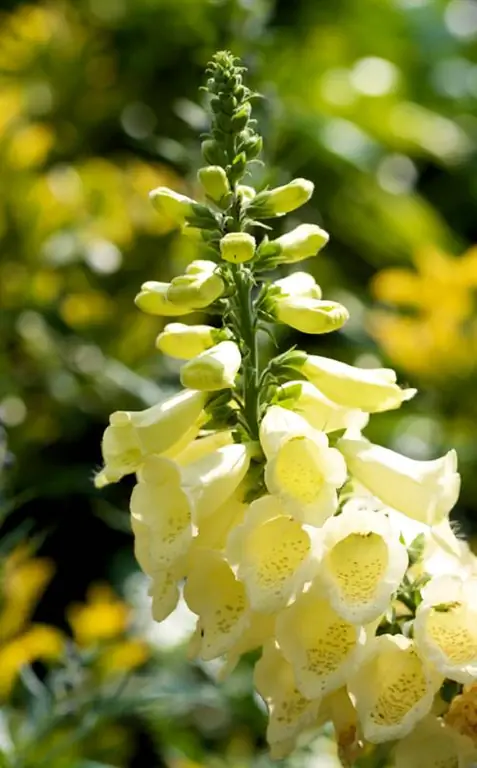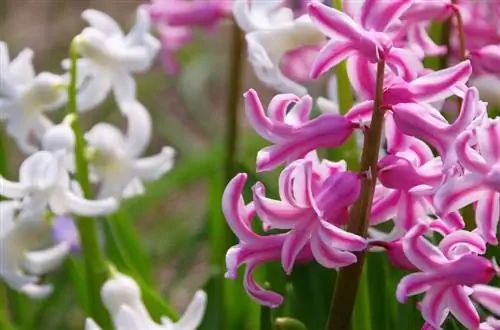- Author admin [email protected].
- Public 2023-12-16 16:46.
- Last modified 2025-01-23 11:20.
As a robust plant family that also occurs in extreme locations in the high mountains, the different species of Saxifraga can certainly put up with a lot. However, the saxifrage's ability to grow and bloom can be significantly increased with a thoughtful choice of location and suitable care measures.

How do I properly care for my Saxifraga plant?
Saxifrage plants (Saxifraga) require different care depending on the species: sunny to partially shaded locations, well-drained substrate, regular watering and, if necessary, sparing fertilization. No pruning necessary, remove dead plant parts and protect in winter if necessary.
How often should Saxifraga representatives be watered?
Basically, most Saxifraga species should be additionally watered, at least during extended periods of heat and drought, as they are usually planted on a well-drained substrate. However, the exact requirements between the more than 450 Saxifraga species vary greatly. As a rule of thumb, fine-leaved saxifrage species require a more regular (sometimes daily) water supply than saxifrage species with succulent, thick-fleshed leaves. If possible, watering should not be carried out in the midday heat, but in the morning and evening hours.
When will the saxifrage be transplanted?
The best time to plant saxifrage is spring. Often specimens planted in April or May can form amazing cushions with large numbers of flowers as early as summer. For the Saxifraga species, which are native to partial shade and prefer a little moisture, mix some rotted compost into the potting soil to save time and effort when watering.
When and how can the saxifrage be cut?
The saxifrage does not necessarily require pruning in order to limit its size. Of course, you can also shorten parts of the plant laterally at any time if the cushions grow beyond the intended location. Dead plant parts are removed for visual reasons; this is particularly time-saving with the countless flower stalks of the saxifrage using electric lawn shears (€49.00 at Amazon).
What diseases and pests affect the saxifrage?
Occasionally, saxifrage plants are attacked by beetles called black weevils. These can be lured into small pots full of wood shavings and collected regularly. It is also possible to combat it with nematodes, which attack the beetle's larvae and cause them to die within a few days.
Should saxifrage be fertilized?
Only a few species of the saxifrage family benefit from economical fertilizer application, but many thrive particularly splendidly and richly in flowers on barren subsoil with gravel content. Since the species that come from mountainous areas in particular prefer lime-rich locations, the following types of cushion saxifrage, for example, should be given occasional lime doses:
- Saxifraga jenkinsae
- Saxifraga apiculata
- Saxifraga pungens
How is the saxifrage overwintered?
With balanced moisture conditions, most saxifrage species survive the winter outdoors without any special protective measures. Overwintering problems can only occur in locations with strong temperature fluctuations and in the event of clear frosts.
Tip
When buying saxifrage, pay close attention to the respective subspecies and its requirements, as there can sometimes be extreme differences in terms of location and moisture requirements.






